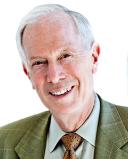Autism
“Kanner Syndrome”: No Way!
Kanner was not the first scholar to consider the subject of pediatric autism
Posted November 23, 2013
In 1943 Leo Kanner, professor of psychiatry at Johns Hopkins University, wrote what is regarded as the foundation document in the history of autism. (Kanner L.1943). Voices have become loud to name autism, or currently, autism spectrum disorders, “Kanner’s Syndrome,” in honor of this supposedly epochal discovery.
Hold on a minute. We’re being spun here. The term “autism” was in wide use in Europe before 1943. The first explicit reference to autism of which I am aware, meaning exactly what Kanner meant, occurs in 1920, when FW Künkel, an assistant physician at the Eberswalde Asylum of Brandenburg province, referred casually to an “autistic” group of schizophrenic children --“quiet, closed off, loners” -- as one of four psychological groups (irritable, asocial and pedantic being the other three). Most of the children in all the groups were evidently psychotic, or turned out to be later on when admitted to Eberswalde. “The autistic children,” Künkel said, “tend more to catatonia, the asocial more to hebephrenia.” The autistic children were also said to be quite “gifted.” (This would actually qualify as the introduction of the concept of high-end autism, or “Asperger’s syndrome,” had Künkel provided any case histories.) (Künkel FW, 1920).
The only reason people are not crying for the renaming of ASD as “Künkel’s Syndrome” is that nobody knew about it. Nor did anybody know about a series of further articles including those by several distinguished Russian pediatric neurologists in the 1930s appearing in German-language journals. (Shorter E, Wachtel L, 2013).
Oh, but Dr Kanner, surely you included references to all this previous literature in your 1943 article, given that you were born in Austria and spoke German?
Nope. Kanner’s “pathbreaking” paper included no references, as though he was the first scholar ever to have considered the subject of pediatric autism.
This borders on a monstrous fraud. But listen. Kanner’s pal Hilde Bruch, who “discovered” anorexia nervosa, pulled a similar deal, writing as though she was the first person ever to have written seriously about anorexia nervosa.
Bruch was born in a small-town in Germany and had a medical degree from Freiburg in 1929. Kanner was born in a small town in Austria and had a medical degree from Berlin in 1919. He arrived at Johns Hopkins in 1930, she a decade later. Both were fleeing the blowtorch of German anti-Semitism. Both were totally keen to make it in the New World. And there is no better way to make it in medicine than by discovering new diseases.
This route to glory is especially well traced in pediatric psychiatry, where there are biological markers for nothing, the diseases all blend together, everything is driven by frantic parents who are gullible for “new diseases,” convinced that their children’s woes could not possibly stem from inadequate parenting but must rather be the result of “medical disorder.”
What further smears Vaseline on the lens in Kanner’s case is that a knowledge of German was rapidly vanishing in American psychiatry. The triumph of psychoanalysis in the 1930s and -40s made the older Central European literature seem increasingly irrelevant. Who needed to read that old stuff when Freud’s wisdom offered all we need? After 1933, the language of psychoanalysis became English, not German.
As well, after the Second World War, German concepts and wisdom were not exactly à la page in American psychiatry. The sound of German evoked the horrors of the Holocaust. And the many American psychiatrists of Jewish origin had little interest in pursuing these now obscure German journals further. (But of course those very journals were at the epicenter of international psychiatry before 1933, and no-one had ever heard of the American Journal of Psychiatry.)
Thus it was that Kanner became world-famous as the discoverer of autism, and all his predecessors, who had labored mightily in the trenches of clinical research, trying to apply the concepts of Eugen Bleuler and Ernst Kretschmer to children, vanished from the picture.
At a recent international meeting on autism I presented some of these findings, and there were Russian pediatric neurologists in the audience. I showed pictures of the pioneering Russian figures, and the Russians of today were stunned. They had no idea. History is funny, isn’t it?


